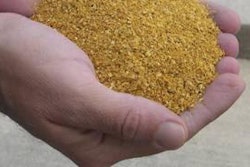The pet food industry in Latin America holds a 17 percent share of the global market. Currently, the volume of pet food is 4 billion metric tons, and it is expected to increase to 6-7 billion tons of pet food by 2017. Latin America is the third-largest market in the world with the highest rate of growth, and four countries share almost 95 percent of the market volume: Brazil, Mexico, Argentina, and Chile (where 40 percent is still imported). Brazil, Mexico and Argentina account for 93 percent of volume, with Brazil alone making up 70 percent, said Dr. Gianni Carniglia, National Renderers Association, at the International Rendering Symposium. The symposium was sponsored by the National Renderers Association and U.S. Poultry & Egg Association and was held during the 2013 International Production & Processing Expo. The Latin American pet food market has been sustained up to now mostly by economy products. But as the socioeconomic situation improves, consumers are requesting better products. That demand is not being met because of a shortage of high quality materials, Dr. Carniglia said. “Consistent and healthy growth in the pet food industry requires improvement in the quality of local protein meals and fat, a huge opportunity,” he added.According to the criteria for a “green” industry set by a noted environmental organization, rendering can claim that distinction. Rendering meets most of the applicable measures for being called “green” set out by the World Resources Institute, based in Washington, D.C.For instance, one of the attributes of a green industry is sustainably produced inputs. Rendering is by nature sustainable, although improvements are possible, said Dr. Charles Gooding, a professor in the Department of Chemical Engineering, Clemson University. Rendering has long used production processes that minimize the use of water, energy and materials — as required to be “green” — although more as a cost savings measure than an environmental one, Gooding added. And the very essence of rendering fulfills another requirement, that the production process be free from harmful toxins. Similarly, rendering reuses and recycles solid water streams. While it might be a stretch to say that rendering’s products are built for longevity and durability, it could be argued that one product — pet food — could be considered useful or important.
Rendering a naturally ‘green’ industry
The pet food industry in Latin America holds a 17 percent share of the global market. Currently, the volume of pet food is 4 billion metric tons, and it is expected to increase to 6-7 billion tons of pet food by 2017. Latin America is the third-largest market in the world with the highest rate of growth, and four countries share almost 95 percent of the market volume: Brazil, Mexico, Argentina, and Chile (where 40 percent is still imported).















